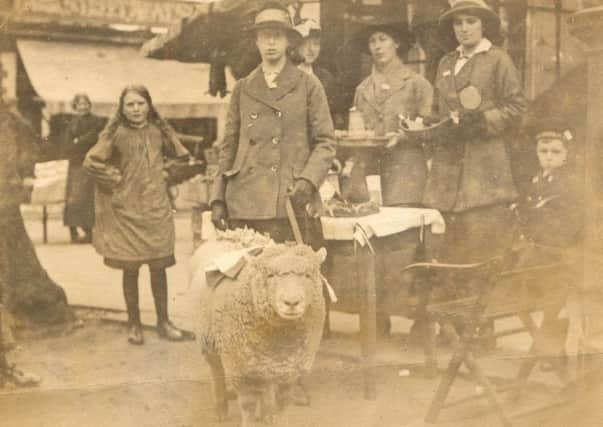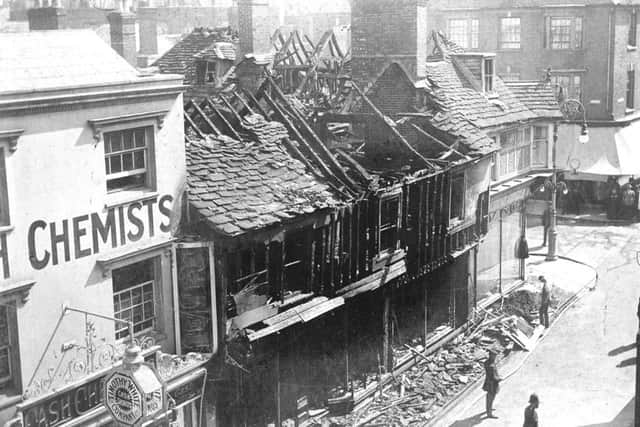Revealed - Horsham's centre of historic Suffragette revolution


60 West Street. Today it is an outdoor clothing shop yet, 100 years ago it was a centre for women supporting the troops on the front lines, and a space to meet for a social and literary occasions.
However, prior to this genteel purpose, the building was at the vanguard of the movement to give women the right to vote.
Advertisement
Hide AdAdvertisement
Hide AdIt was here that women met, plotted and then marched, protesting throughout Sussex to demand women’s suffrage.


Though not a military outfit the Qui Vive Corps were organised on military lines and the members wore uniforms.
The aim was to show men that women were equally capable of organisation, discipline and comradeship.
Advertisement
Hide AdAdvertisement
Hide AdA rare poster announcing a meeting at the Qui Vive Corps depot is held by Horsham District Council’s Horsham Museum & Art Gallery.
The Qui Vive Corps, which campaigned for women’s right to vote, was founded in 1912 following the Women’s March from Edinburgh to London to petition the Prime Minister. The basic aim of the Corps was to provide an umbrella organisation under which more women’s suffrage groups could join, and then at a moment’s notice women they could be “mobilised” to support protests.
The base in West Street in Horsham was on the first floor above Timothy White’s and had a room set aside for meetings, debates and discussions.
Members would also sell literature, jams and cakes to fund the upkeep of the premises.
Advertisement
Hide AdAdvertisement
Hide AdWith the declaration of World War I the Qui Vive Corps stopped their more radical activity and transformed into an organisation which provided aid and comforts to troops on the front line.
On 12 September 1914 the local paper reported that the Committee of the Horsham Suffrage Society offered the use of the building on West Street to the Women’s Social and Literary Club to collect fruit, sugar and jars for the making of jam to send to the front line.
In this testing time of war the nation used the organisation and mobilisation skills of women’s suffrage organisations to assist with fundraising for the war. Horsham also housed the Patriotic Women’s Hospital base in the Causeway, from which the members provided medical supplies to the troops.
Although the Representation of the People Act received its Royal Assent on February 6 1918, it wasn’t until the so-called Khaki Election of December 1918 that women could exercise their right to vote.
Advertisement
Hide AdAdvertisement
Hide AdIn the intervening months there was a great deal of public discussion in Horsham about the impact of women having the vote.
There were public meetings, articles in the local press, information aimed at teaching girls and women about the constitution, and suggestions for how women’s vote may affect social policy, education and welfare.
Following the passing of the Representation of the People Act the combined constituency of Worthing and Horsham had an electorate of 44,000.
Despite the boom in the number of people eligible to vote, nationally less than 30 per cent of the electorate registered to vote actually exercised that right.
Advertisement
Hide AdAdvertisement
Hide AdWhilst the 6 February is highlighted as a major point in the movement for women’s suffrage, its impact was more significant for men.
The Representation of the People Act 1918 saw the widening of as all men over the age of 21 could now vote regardless of whether they owned property, along with women over the age of 30 who met minimum property qualifications.
Women would have to wait until 1928 to have the same right to vote as men. The impact of the act saw the size of the electorate triple from 7.7 million to 21.4 million as many working men had previously been excluded.
Women now accounted for about 43 per cent of the electorate. It is worth noting that had women been enfranchised based upon the same requirements as men, they would have been in the majority, due to the loss of men in the war.
For more information please see the museum blog. Don’t forget to stop by the plaque on West Street which commemorates the Qui Vive Corps depot.